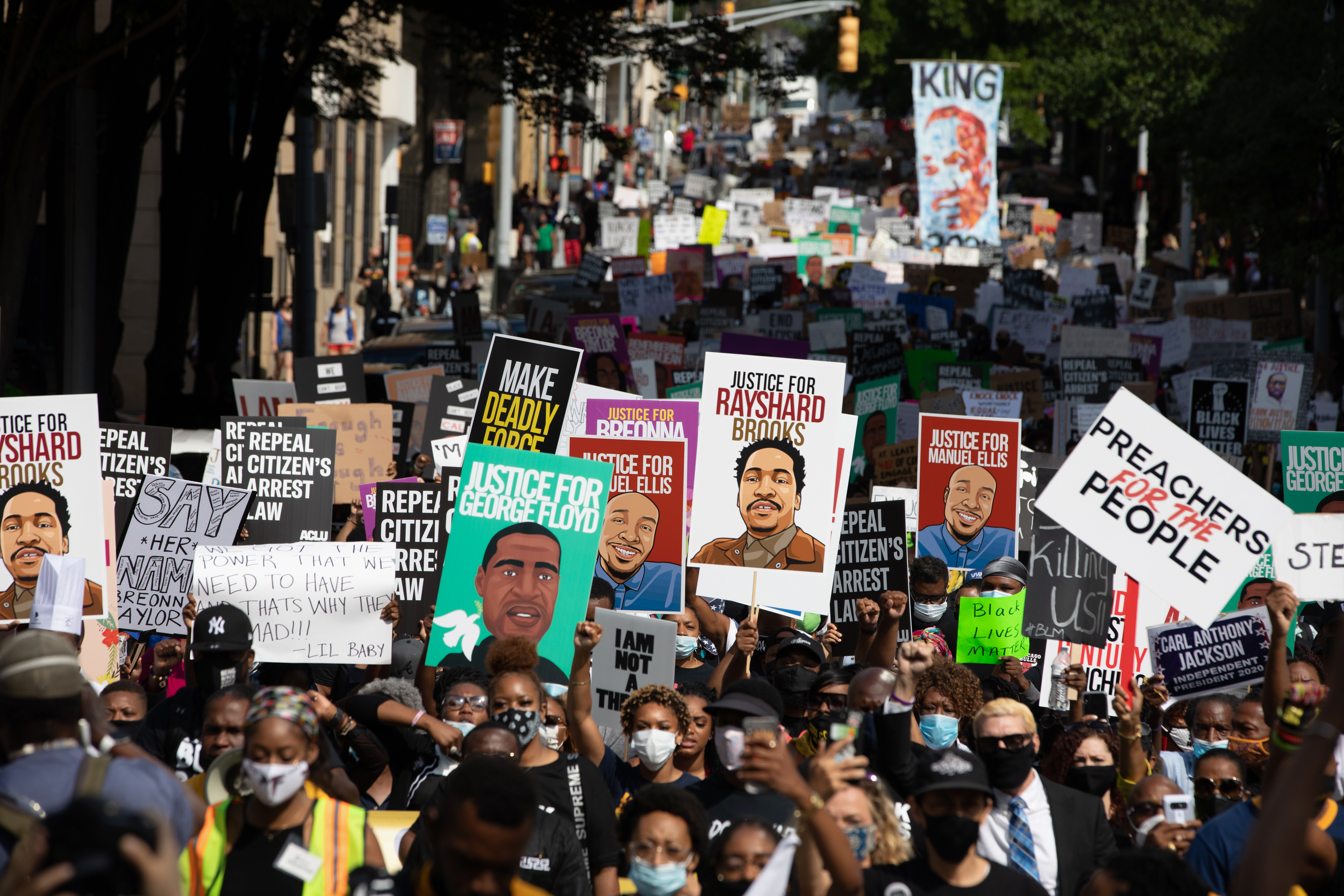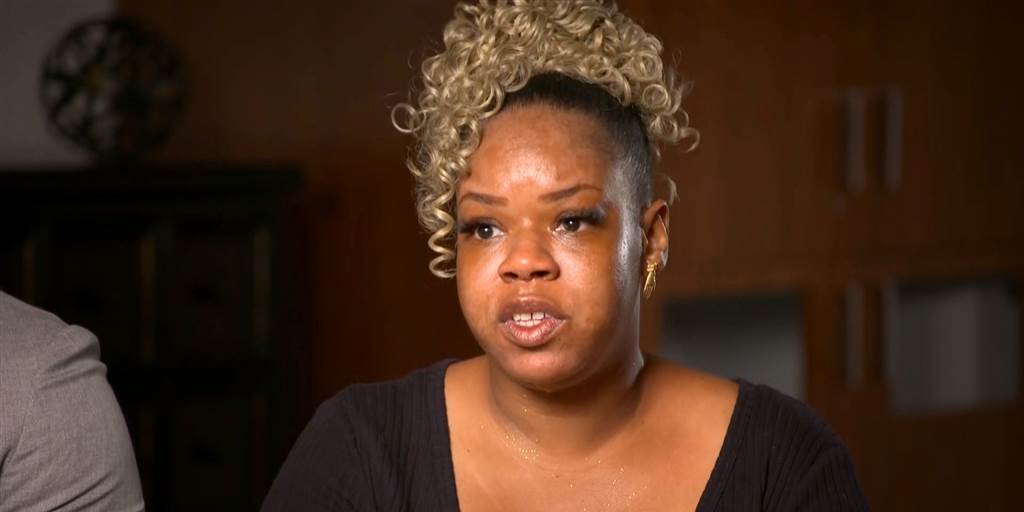It started off as routine: a man asleep in his car in a fast-food drive-thru. But it rapidly spun out of control when Atlanta police tried to handcuff and arrest Rayshard Brooks for being intoxicated.
Video of the scene from late Friday shows the 27-year-old Black man wrestling with two white officers, taking a Taser from one of them, running a short distance through the Wendy's parking lot, and then pointing the stun gun toward one. That officer shot him twice in the back, killing him.
How did it all go so wrong so fast? And what, if anything, could officers have done to defuse the situation?
Some law enforcement experts say the answers to those questions are complicated and not as clear-cut as in the recent death of George Floyd, the Black man who was pronounced dead after a Minneapolis officer put his knee on Floyd's neck for nearly 9 minutes.
Get top local stories in DFW delivered to you every morning. Sign up for NBC DFW's News Headlines newsletter.
Among the questions being asked: Instead of arresting Brooks, couldn't officers have just taken away his keys and let him walk home or get a lift from someone? Could the officers have said or done something else to help keep him calm and safely place him under arrest?
And why did one of the officers shoot him rather than just let him run away and catch him later, since they already had his driver's license information?
“It’s not an open-and-shut case. The DA has a hell of a choice on his hands to deal with this case,” said Timothy T. Williams Jr., a use-of-force expert who spent nearly three decades with the Los Angeles Police Department. “It’s a very complicated case.”
The officer who killed Brooks has been fired, and the other officer has been put on desk duty. Atlanta's police chief has resigned. The district attorney expects to decide by midweek whether to charge the officers.
Some observers said the officers had options other than to arrest Brooks, especially at a time when the coronavirus is making jails more dangerous.
“They could have easily waited and caught him later,” L. Chris Stewart, the Brooks family’s lawyer, said on NBC’s TODAY show. “It was just unnecessary.”
Williams said it's not that easy and called efforts to second-guess the decision to arrest Brooks Monday-morning quarterbacking.
“You're trained to enforce the law. If there are laws being broken in front of you, you have an obligation, a legal obligation, to do what has to be done," he said.
Still, Atlanta Mayor Keisha Lance Bottoms said on NBC's "TODAY" show that "it didn't have to end that way," noting Brooks' initial interaction with the officers was "pleasant."
"And that’s what’s so frustrating, and quite frankly, it leaves us asking so many questions, because we do so many things in Atlanta we thought to get it right, and this went so terribly wrong," said Bottoms.
Bottoms is vowing to change police use-of-force policies in Atlanta, including making sure officers intervene in a situation where they see wrongdoing by a colleague, and officers will be required to receive continuous training in how to deescalate situations before the consequences become fatal.
Law enforcement experts are split on whether deadly force was warranted in this case.
Police generally can use deadly force if they reasonably believe their lives or the lives of others are in imminent danger. Legal rulings have recognized that officers are required to make split-second decisions, and they are given certain leeway under the law.
The question here is: Would a reasonable officer, fearful that the Taser could be used to incapacitate him, decide that deadly force was necessary to stop the threat?
While police generally consider Tasers in their own hands to be nonlethal weapons, Kevin Davis, a police officer in Ohio for nearly three decades who specializes in training, said that a stun gun in the wrong hands and pointed at the head, for example, could prove deadly or cause serious injury.
On the other side of the argument, Tasers have a reach of about 15 feet, so the officer could have tried to keep his distance. Also, it was a crowded parking lot, making it risky for an officer to fire his gun.
Could the officer have shot Brooks in the leg or somewhere else that wouldn't have been deadly? Police experts reject that idea, saying that officers facing what they believe is a deadly threat are trained to stop it cold, which usually means shooting at a person's torso.
In any case, “the notion that under these kinds of situations, when you’ve got a subject moving and you’re moving, and you’re going to shoot him in the leg? That’s preposterous. It’s just not realistic," Davis said.
Rayshard Brooks Coverage
Some experts say the real friction happened well before Brooks and the officers even met.
How they interacted was influenced by decades of racism and distrust between police and the Black community, said Kalfani Ture, a professor of criminal justice at Quinnipiac University and a former metro Atlanta police officer.
“Whether we like it or not, this society socializes us to see Black men in particular ... as potential threats, if not outright threats. And while it may appear to you and I watching this film that this is a very innocuous exchange, encounter, it’s filled with much just roiling beneath the surface,” Ture said.
Davis pushed back on the notion that race was a significant factor in this case.
He watched the videos, slowed down the footage and zoomed in to analyze it frame-by-frame. From his perspective, he said, the officer who killed Brooks was trying to run for cover in the parking lot and evade Brooks. Those actions, he said, show that the officer felt there was a threat of imminent harm.
Brooks “was shot because at that moment he presented a deadly threat to those officers,” Davis said. "Mr. Brooks escalated this resistance to a point where these officers were forced in very dynamic chaotic conditions to make a split-second decision.”



